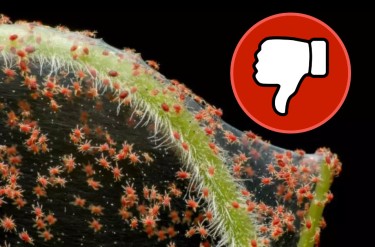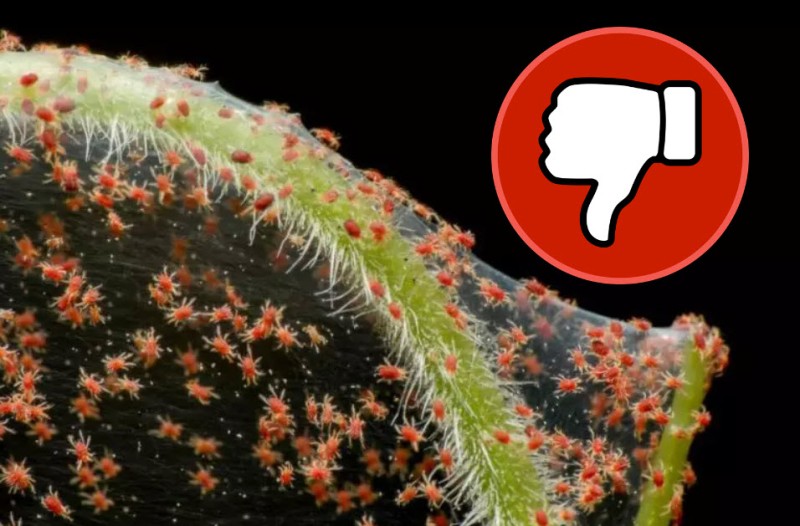Spider Mite Infestation and How to Treat It Properly

Pests are invaders, and your thriving cannabis farm is vulnerable to them, especially spider mites commonly found outdoors and houseplants. Spider mites cause a lot of damage to the cannabis plant affecting its growth and possibly killing it. All cannabis growers must get familiar with spider mite: identifying it, the injuries it causes, and how to treat it. How do you keep bugs off your marijuana plants, especially outdoor growing?
What are spider mites?
Spider mites are not insects: they are called "Arachnids" and are often called spiders because they have eight legs and don't have antennas. You cannot miss their oval-shaped bodies and can cause devastating damages to plants. Their high reproductive rates make them even more destructive as their eggs hatch from 3-5 days.
Why Spider mites like cannabis plants
These mites are like weed plants because of the chlorophyll in them, which is also what enables photosynthesis. With their tiny teeth, they bite into the plant cell to get the chlorophyll. Now visualize how millions of spiders ravage a cannabis farm and the destruction they can cause to the crops.
The signs of spider mites infestation on weed
It may not be easy to spot their damages immediately, so constantly monitor your crops and routine leaf inspection. If you see tiny dots all over your plants, it is a sign of spider mites infestation. Since they live under the weed's leaves, you can check under your plants for them and their eggs.
You will know that spider mites have a home on your crops when you find white lies between your leaves. The lines will gather dirt and dust, thus making your plants look untidy. You will mostly see these signs in the flowering parts of your plant. If an entire weed plant has been badly affected by spider plants, the whole plant will look sickly, weak, and with color changes.
How to treat spider mite infestation
There are numerous methods to prevent and treat spider mites infestations on cannabis plants. But the most effective methods are natural predators who will get into your farm or plants and feed on the spider mites. These are beneficial mites that can also lay eggs on your farm, and when the eggs hatch, they will feed on the spider mites.
You can also protect your weed plant from spider mites by not bringing in new plants outside from the cannabis grow room. Bringing in new plants is a sure way of having lots of spider mites on your farm. So you must introduce a new plant; please keep it in quarantine for at least two weeks before taking it in. Get a microscope and check for the signs we discussed before taking it into the grow room.
-
Hard water spray
An effective way to treat your plants is to use hard water spray on the plants and do this for three days (in the mornings). The pressure from the water will get rid of the bugs and whatever webs they leave behind. You will see the bugs all to the ground and watch them die. DIY organic soap for cannabis can help as well.
-
A vacuum cleaner
This is a straightforward way to get rid of spider mites. Get a handheld vacuum cleaner to suck the mites off the leaves. Now, this may take a bit of time, but it works effectively. Carefully put all the contents in the vacuum into an airtight plastic bag and put it in the freezer. The cold will kill the mites because they cannot survive in very high temperatures.
-
Ladybugs
Ladybugs are a natural remedy for treating your cannabis plant against spider mites. They eat spider mites and can kill a lot of them in just one day. Instead of waiting for the ladybugs to come to your cannabis farm, you can purchase them and intentionally release them into your cannabis plant. You also want to make your cannabis farm a conducive environment for the ladybugs, so they lay eggs. The more Ladybugs, the more protection you have over your cannabis plants.
-
Lacewing
Green Lacewings are spider mites predators who also feed on the eggs of mites. A fun fact about spider mites is that they can eat over 150 mites weekly. It is common to use Lacewings for insect control in farms, greenhouses, and home gardens. Although they can appear on your farm on their own, you have to encourage them to stay for longer on your farm. You can do this by stopping full-spectrum pesticides on your farm because it negatively affects the Lacewing.
-
Big-eyed bugs
Another natural remedy and treatment against spider mites are Big-eyed bugs which feed on a variety of insect pests that cause damages to plants. It is essential that you can identify them so you don't assume that they are harmful pests. You can easily spot them in the mornings or evenings; they have triangular heads with large eyes. They feed on spider mites, Thrips, Whiteflies, and Caterpillars.
Every marijuana grower's nightmare is watching their plants get ravaged by spider mites because spider mites can hatch millions of eggs on the farm within a few days. Even after you think you have gotten rid of the spider mites, some of them may lurk behind the plants, so don't assume they are all gone after the treatment.
Keep your eyes on your plants at all times and have the ladybugs around just in case there is a reoccurrence. You can also visit the local gardening center in your municipality to search for effective sprays to get rid of mites. Neem oil is also an effective solution: shake the cannabis plant so the mites can fall off and use the Neem oil to kill the mites you see. You can also use horticultural oil, miticide, or dormant oil. If all else fails, try this post harvest bath for cleaning bugs off your cannabis plants.
Bottom Line
When you start growing cannabis, it is easy to get carried away by your blooming plants. Yes, it is good to admire your hard work but remember to pay close attention to your plants' appearance. Early detection of spider mites is one of the safest ways of protecting your cannabis plant such that even before considering intensive treatment, you have mitigated all risks.
FIGHTING OFF PESTS IN YOUR GROW, READ MORE...
DIY SOAP FOR YOUR CANNABIS PLANTS TO GET RID OF MITES AND BUGS!
OR..
PESTICIDES ON MARIJUANA PLANTS - A GROWING CONCERN IN THE INDUSTRY?







